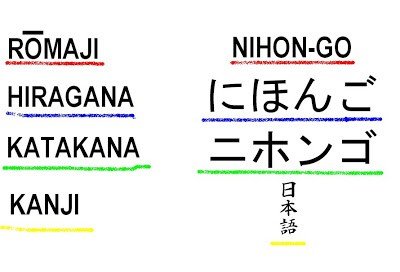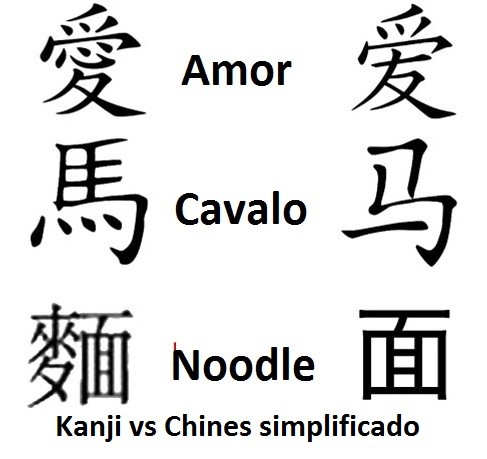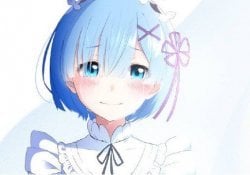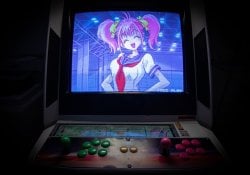Have you ever wondered why Japanese people use Kanji? Chinese ideograms in your language? In this article, we will understand the importance of kanji and why you shouldn't stop using it.
The Japanese language is a syllabic language composed of 3 types of writing, Hiragana and Katakana, which is a syllabary of 46 (+2 obsolete) characters, which in total forms approximately 104 syllables. There are also the damn Chinese ideograms (kanji) that total more than 8 thousand. In reality, a Japanese only needs to learn about 1945 kanji to survive, and these ideograms also have several pronunciations totaling 4087 different ways of reading kanji.
With hiragana it is possible to write any Japanese word, since it covers all 104 syllables of the language. Since it is so, why do the Japanese insist on using Kanji? Couldn't they just use Roman characters? Or just Hiragana? The answer is clear and simple, NO!

Well, there is a very logical explanation for the use of Chinese ideograms in the Japanese language. This explanation implies one of the great difficulties in learning the language, the countless homophonic words.
Homophone words are words that have the same pronunciation but have a different meaning. In Japanese, if you use only hiragana, the word will have the same pronunciation and spelling, becoming a word Namesake, becoming more difficult to understand.
Suppose there are no Kanji, how would you translate this sentence?
- かみです (kami desu)
It's kind of impossible to translate this, because you don't know what "Kami" actually means, now look at the sentence if we have the kanji:
- (かみです) 神です = God
- (かみです) 紙です = Paper
- (かみです) 髪です = Hair
です can be understood as "is" or "to be" depending on the context.
Japanese people use the scenery, the context of the conversation and the occasion a lot, so during a conversation you will probably understand, but when reading a text or phrase you can be totally lost.
Japanese is full of the same words, besides there are words that are just a syllable like hand (手, て, te) and eye (目, め, me) so it is kind of impossible to identify those words in a text without the ideograms.
But do not think that the problem is just that, there are words that can have more than 50 words with the same pronunciation. Not to mention words that look like particles or other words, how could you read that?
Índice de Conteúdo
Let's see some examples:
- Only Hiraganaみぎみみみぎめみぎめみぎみみ
- Kanji右耳右目右目右耳;
- Romaji Migimimimigimemigimemigimimi
Can you understand this phrase with hiragana only? This is a hell of a tongue twister, which means "Right ear, right eye, right eye, right ear"
- Hiraganaすもももももももものうち
- Kanjiすももも桃ももものうち
- Romaji Sumomo also gives fine peach while in the peach orchard
Can you understand what is written only with hiragana? I just see a lot of momomomo... The phrase means "Plums and peaches are in the peach family".
Let's take an easier and more common example: "ははは..." You'll probably hear this phrase a lot, but do you know what it means? With kanji it would be 母は... that is "The mother..." Reading only ははは you can get lost and think of another word or a laugh.
It is much easier to understand the above phrases with kanji. In addition to the text size getting smaller, and even faster to read and write. Knowing kanji you can really understand the sentence as soon as you read it.
English, Korean and Chinese
What about homophone words in English? In English there are the same words written in different ways, in addition to numerous accents. It's kind of impossible to do that with Japanese since it's only 104 syllables.
Koreans created their own alphabet known as Hangul, it has 14 consonants and 10 vowels, but which attached together total up to 1960 different sounds, making Koreans not have this problem. Unfortunately to end the Kanji I would have to change the language completely, this is kind of difficult, since there should only be 1 language in the whole land, and nobody collaborates with this possibility.
The Chinese use the ideograms in a simplified way, why don't the Japanese start using the simplified Chinese ideograms? Well I don't know the answer to that question, Japan is an ancient country, which adopted its writing before simplified Chinese existed, it would probably also imply the way that Japanese is taught, the radicals and the words that are already in the mind of the Japanese people. But the Japanese make the necessary changes in some ideograms, so there is no reason to question.
The Japanese language has undergone numerous changes since its origin, this has made Japan have numerous dialects. Changing the writing and pronunciation system would cause numerous problems and difficulties. O kanji it is common in Japanese, he is not a 7-headed animal, the Japanese really see no reason to make changes or adopt a way of simplifying ideograms.
Is that you? What do you think of Japanese ideograms? Is it a big challenge? Leave your comments and share with friends.





